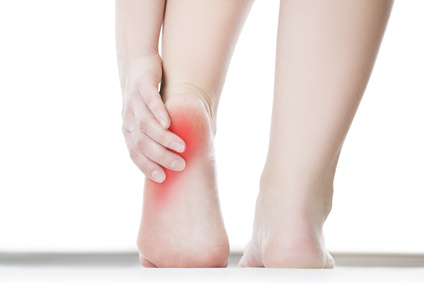 Heel pain is common, especially amongst runners and pregnant women, and is often caused by Plantar Fasciitis, a condition in which the plantar fascia, the thick connective tissue that runs from the base of the heel to the front of the foot, becomes inflamed. However, there are other causes of foot and heel pain, and it is important to find out exactly what is causing the pain you are experiencing in order to treat it correctly.
Heel pain is common, especially amongst runners and pregnant women, and is often caused by Plantar Fasciitis, a condition in which the plantar fascia, the thick connective tissue that runs from the base of the heel to the front of the foot, becomes inflamed. However, there are other causes of foot and heel pain, and it is important to find out exactly what is causing the pain you are experiencing in order to treat it correctly.
What Causes Heel Pain?
Plantar Fasciitis is certainly a very common cause of heel pain, and it is common in those who exercise intensively, or are overweight or pregnant. However, there are other causes of heel pain that require quite different treatment, so it’s important to consider these as well.
Other types of foot and heel pain include:
• Soft tissue sprains and strains. There are many muscles, tendons and ligaments in the feet and ankles that can become strained in the course of everyday activities and exercise. Soft tissue injuries are common, but generally heal rapidly when rested.
• Joint pain. There are more than twenty joints in the foot and ankle area. These joints often become stiff or irritated as a result of walking or running on uneven surfaces, or wearing shoes that allow the foot to place pressure unevenly in certain areas.
• Nerve pain. Repetitive impact forces from running can cause nerve tension in the feet and create pain. This is commonly experienced alongside joint and soft tissue pain, so it can be difficult to diagnose but it is important to treat it alongside your joint or soft tissue injury.
How Can I Treat Heel Pain?
Heel and foot pain can often be treated at home, although persistent and long-term pain should always be referred to your doctor. However, you should do your research carefully to ensure that you are treating yourself for the right kind of foot pain. Soft tissue injuries, and plantar fasciitis, can usually be eased or alleviated with a combination of the following:
• Rest
• Ice
• Exercises to stretch and strengthen.
If your injury does not respond to these, you are probably suffering from a nerve or joint issue. Specific exercises will help to solve these problems for you, and you may find that expert instruction from your doctor or a physiotherapist is useful.
Great Shoes are the Best Treatment for Heel Pain

Pop into Foot Solutions today for a free gait analysis test and find a solution that works for you and your lifestyle
































